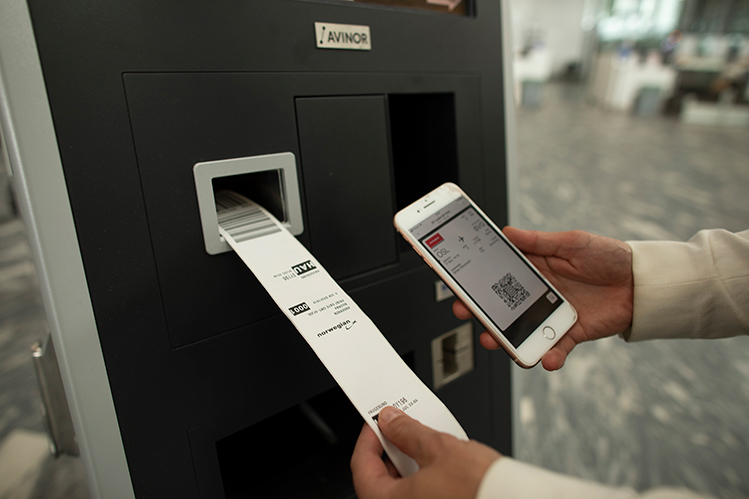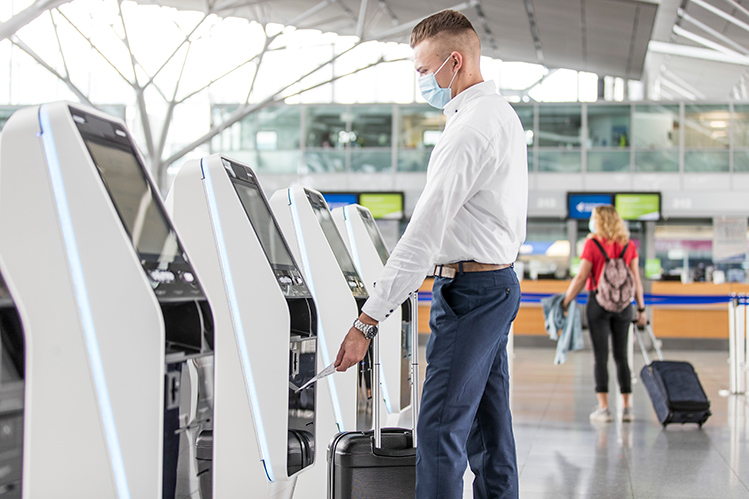An interview with Stephan Hirmer, Head of Passenger Processing Services & Digital Airport, Amadeus. By Ross Falconer
Amadeus Flow is the industry’s first fully integrated cloud platform for passenger handling, incorporating applications, hardware and services that work in unison to optimise the passenger experience.
“With an integrated cloud platform, airports can digitally transform more quickly and with simplicity, providing the agility to respond to the demands of COVID-19 while preparing for longer-term recovery,” explains Stephan Hirmer, Head of Passenger Processing Services & Digital Airport, Amadeus. “By providing a consistent flow of data between applications, and with airline partners, it is much easier for airports to innovate. With Flow, airports connect to airlines using a single internet link to Amadeus, where innovations are accessed from the cloud.”
This means new innovations, such as implementing contactless payments at check-in, can be rolled-out in hours or days rather than months and years. “Strategic technology change projects like biometrics do not require the airport and airline to become systems integration companies,” Hirmer adds. “Instead, a single link to Amadeus means virtually any airline can become part of a biometric passenger flow at the terminal with minimal integration effort.”
Meanwhile, airports can respond to change with agility. COVID-19 has required airports to scale capacity up and down, to mothball terminals, and to move airline passenger handling to new areas. “None of this is possible if a check-in desk is tied to a physical network connection in a specific location,” says Hirmer. “With Amadeus Flow, a laptop is opened, connected to the internet, and service can be provided anywhere.”

Amadeus delivered a fully touchless experience for multiple airports in the Avinor group in just a couple of months using the back-end integration within the Amadeus Flow platform.
Many airports use modules of Amadeus Flow today, including Avinor – operator of 44 airports in Norway. Most recently, Finavia – operator of 11 airports in Finland – selected Amadeus Flow to power its entire passenger services. The Flow platform improves connectivity to airlines, so innovations like contactless payments can be rolled out at 370 check-in desks quickly and easily.
“The mobility benefits of Flow mean airports can offer off-airport check-in and bag-drop services from hotels in destinations where demand is very seasonal or peaks of demand are common, reducing strain on the terminal,” Hirmer explains.
He adds that a national airport operator in Asia Pacific will transition its entire passenger services to Amadeus Flow at three hub airports in the region. “This operator needed the agility to scale operations up and down, to mothball terminals, and also to prepare for the emerging recovery in tourism led by Chinese outbound tourists. The operator is considering how it can deploy mobile check-in services to aide social distancing, as well as preparing to deploy new innovations like contactless, biometrics and self-service more easily from the cloud.”
“A modern, flexible IT infrastructure”
Airports are in survival mode as they cope with reduced demand while also needing to implement safe travel measures.
With Amadeus Flow, airports pay on a per-passenger basis, which means IT costs vary in line with passenger volumes rather than being fixed costs. “This has been extremely welcome across the industry during this crisis,” says Hirmer. “More broadly, we are helping airports to further contain costs by consolidating passenger handling within a single terminal thanks to the agility of the cloud. Airports are also delivering new contactless processes for payment, bag-tags and other points of service to meet new passenger requirements in less than two months with Amadeus Flow. Some of our customers are also moving passenger services off-airport as a means of reducing queuing and delivering social distancing within the terminal.”
As traffic volumes return, Amadeus’ solutions can help airports with longer-term challenges such as increasing capacity without terminal expansion by delivering passenger services off-airport and increasing self-service deployments. They can also drive non-aeronautical revenues, enabling reinvention of the check-in hall as retail and service space by removing fixed IT infrastructure and delivering mobile passenger services. Meanwhile, Amadeus can also deliver biometrics from the cloud for simplicity, customer experience and time-to-market benefits.
“All of these objectives require a modern, flexible IT infrastructure where technology can be ‘consumed’ by airports as a service, rather than them having to knit ever-more pieces together at the terminal,” Hirmer explains. “Take the example of biometrics – an airline enrols into Amadeus’ platform once in the cloud and can immediately begin offering biometric services at all airports running Amadeus’ hardware. Compare that to the same airline needing to arrange for onsite integrations to kiosks, bag-drops and gates at multiple different airports around the world. Airlines and airports shouldn’t be systems integration companies, nor do they need to be with a cloud platform.”

Stephan Hirmer, Head of Passenger Processing Services & Digital Airport, Amadeus: “When it comes to delivering an end-to-end traveller journey, we believe there are two strategic technology enablers: moving airport IT infrastructure to the cloud so airports can better connect to airlines and roll-out new passenger experience innovations more quickly, and rolling-out biometric identity across every passenger service point with full integration to airline systems so passenger service levels remain high.”
Delivering a fully touchless experience
COVID-19 has accelerated the trend towards digitalisation and contactless technologies. Amadeus delivered a fully touchless experience for multiple airports in the Avinor group in just a couple of months using the back-end integration within the Amadeus Flow platform. “Rapidly deploying contactless technology in response to COVID-19 is a great proof-point for the cloud – this project would have taken a year under the old onsite model,” says Hirmer. “More broadly, we have run several trials with different airports to retrofit self-serve hardware with different types of contactless interfaces, for example, using the passenger’s mobile phone to operate the kiosk.”
Looking ahead, Amadeus’ focus remains on helping its airport customers to deliver an improved passenger experience and to innovate more quickly.
Hirmer adds that this involves delivering on the immediate impact of the pandemic, so that airports can operate with agility, but also working with its customers towards longer-term change and innovation. “For Amadeus, the most important objective is the end-to-end traveller journey and ensuring it is as smooth as possible. Throughout our work with airports this is continually front of mind and that’s why we’ve engineered a cloud platform that not only connects applications within an airport, but which easily connects an airport to any airline.”







